
Yet another FMCG brand going to the court against a rival brand’s advertising! The latest is Dabur Chyawanprash vs. Baidyanath Chyawanprash!
Baidyanath’s latest ad featuring actor Pankaj Tripathi, made by the ad agency Grey, shows an unnamed Chyawanprash bottle acting as ‘other brand(s)’ against which the brand makes some claims.

So what are the claims that has Dabur all angry and rushing to the court?
1. Baidyanath refers to the other brand(s) having 42 ingredients. The other brand bottle in the ad shows ’42 ingredients’ written on the pack clearly.
2. Baidyanath claims that they have made their chyawanprash by accurately following Ayurvedic texts and by including 52 ingredients.

3. Baidyanath also claims that their chyawanprash is not made with vegetable oil but 100% pure desi ghee.
Dabur’s claims are as follows.
1. “none of the Chyawanprash formulations listed in the First Schedule to the Drugs and Cosmetics Act, contains 42 ingredients and all of them contain 47 or more ingredients and thus it is an untruthful representation”
2. “there are no ‘ordinary’ Chyawanprash according to the Drugs and Cosmetics Act, as all Chyawanprash (and all ayurvedic medicines) are required to be manufactured based on the ingredients and formulation, specified in one of the authoritative ayurvedic texts, listed in the First Schedule to the Act and all of them are known as Chyawanprash. Hence, there is no special or ordinary Chyawanprash and all are Chyawanprash, based on similar formulation, ingredients and all of them provide health benefits including immunity, energy etc.”

Based on Dabur’s arguments, the Calcutta High Court held that there be ad interim ex parte order of injunction in terms of prayers related to restriction on publishing or uploading the said advertisements and removing or taking down them from the websites and TV channels and others! Thankfully, the Court also clarified that Baidyanath can approach the court to vacate the order.
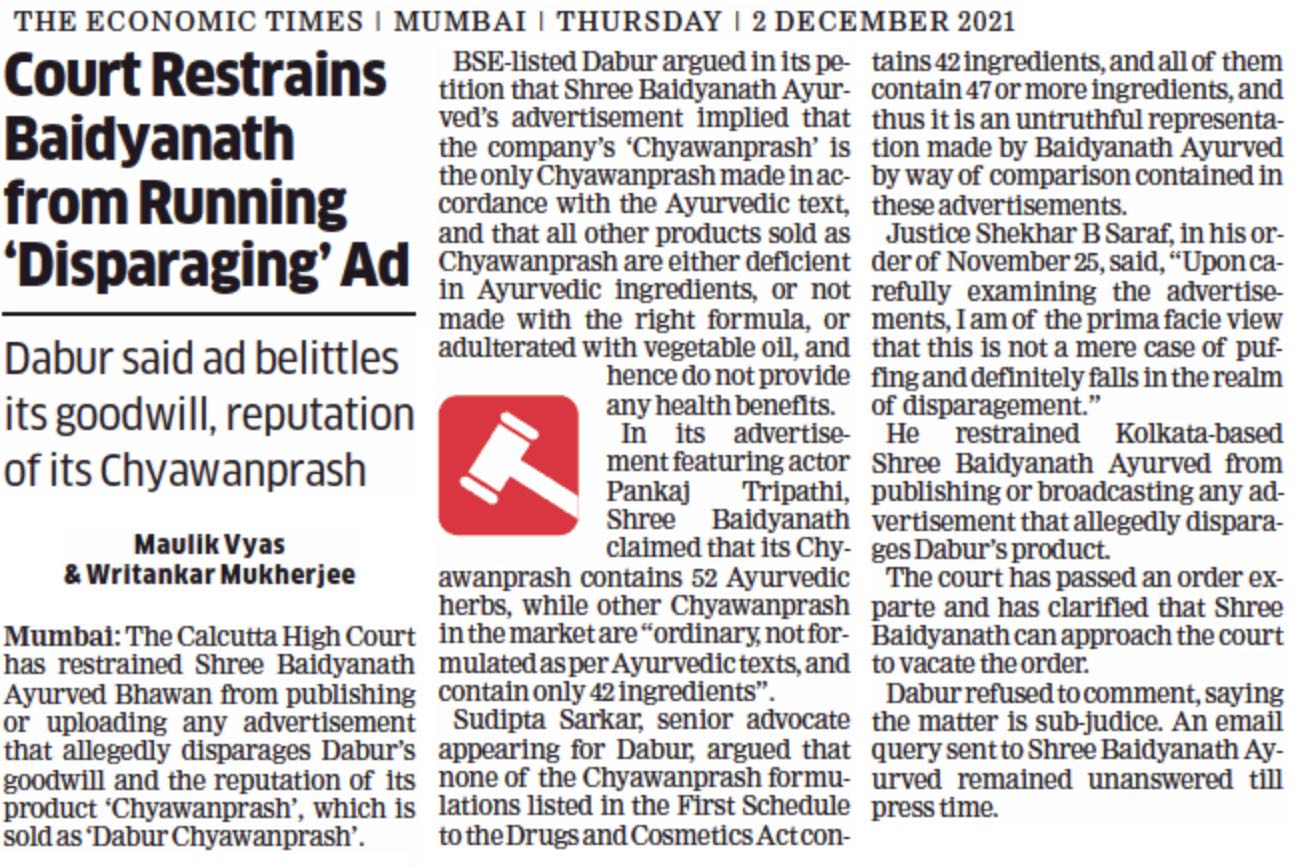
There are quite a few interesting aspects here worth observing.
The first one is about the number 42.
Digression:
I have a very special affinity towards 42 since it is the *Answer to the Ultimate Question of Life, the Universe, and Everything* according to The Hitchhiker’s Guide to the Galaxy by Douglas Adams, my most favorite book of all time. This blog too is named after a character from the book, incidentally.
Digression ends.
Dabur’s claim in the court is that none of the other chyawanprash brands (including Dabur’s own) contain 42 ingredients as per the formulations listed in the First Schedule to the Drugs and Cosmetics Act.
I could not see the chyawanprash formulations listed in the First Schedule to the Drugs and Cosmetics Act so let me take Dabur’s word for granted.
But I can see what other brands claim as the number of ingredients on their packs, promotional materials, or websites. So, I did that. And here’s what I found!

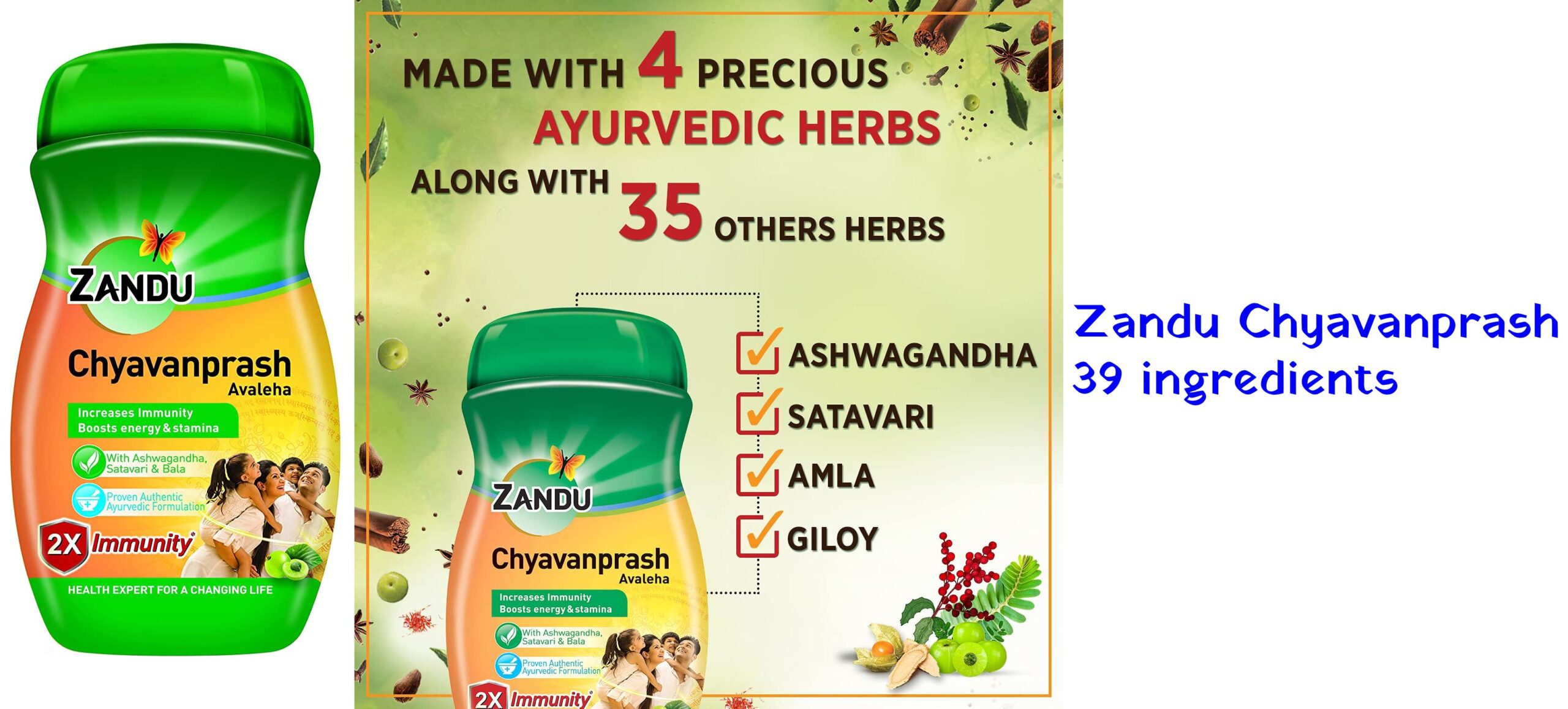

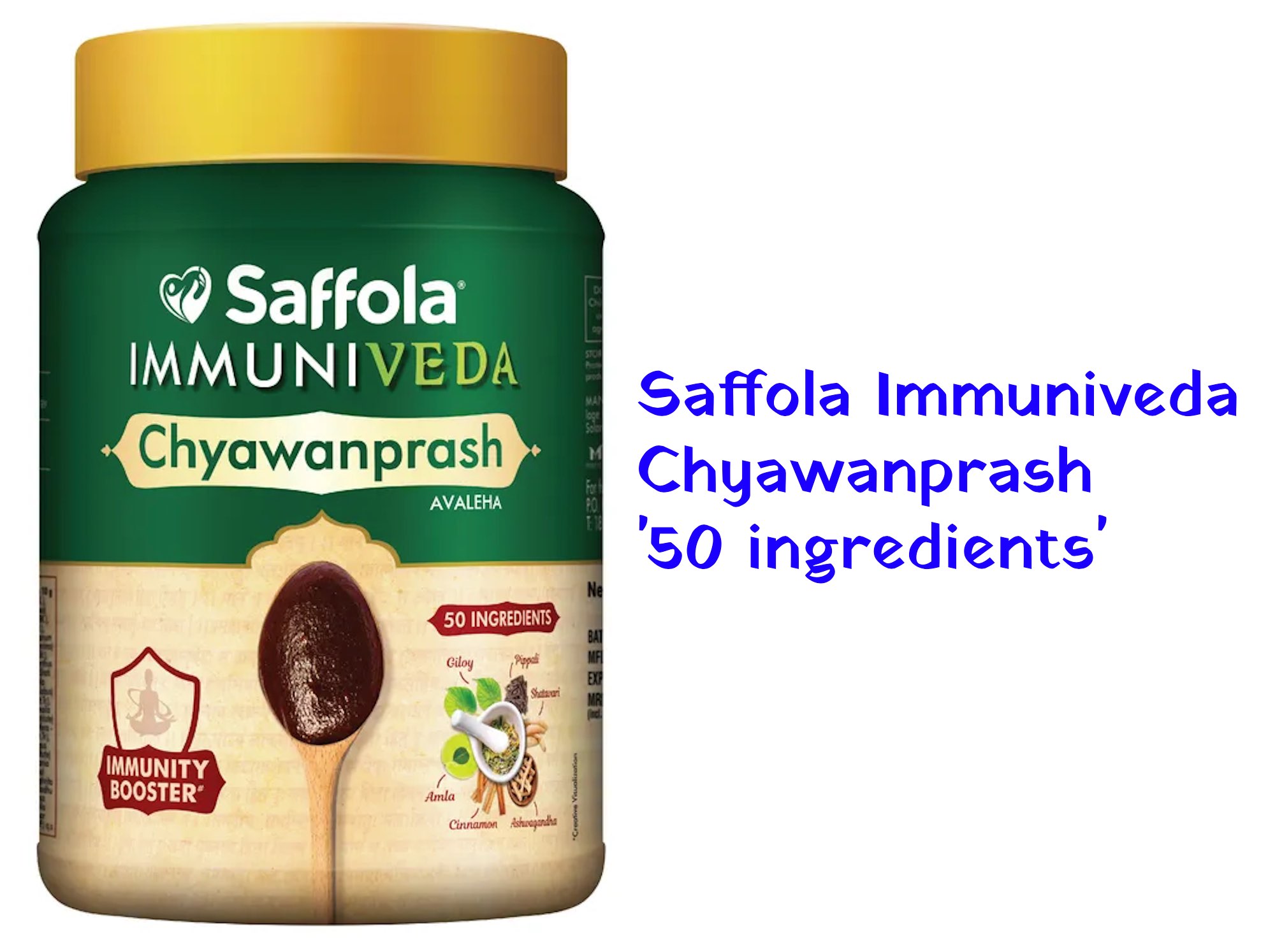
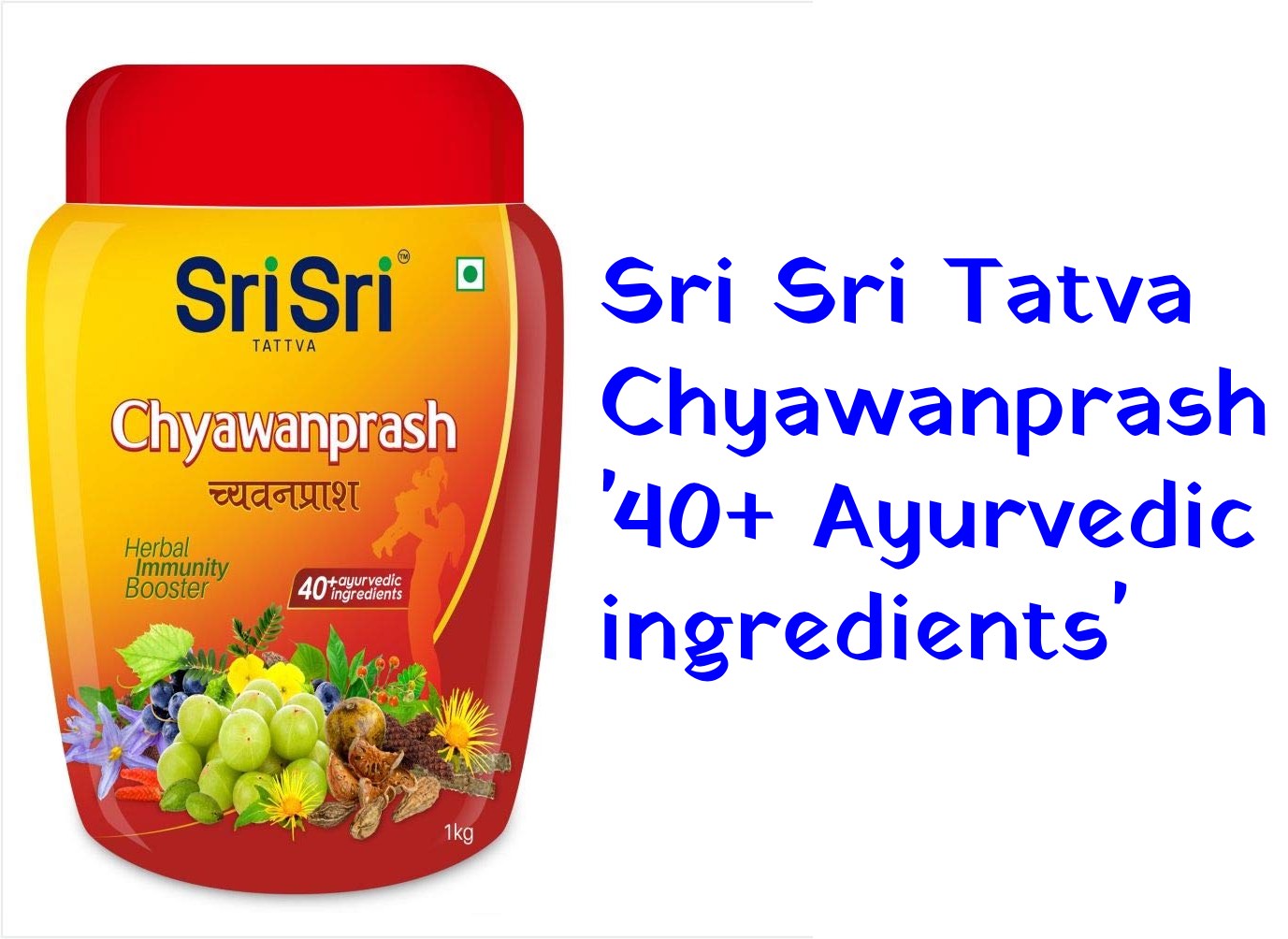

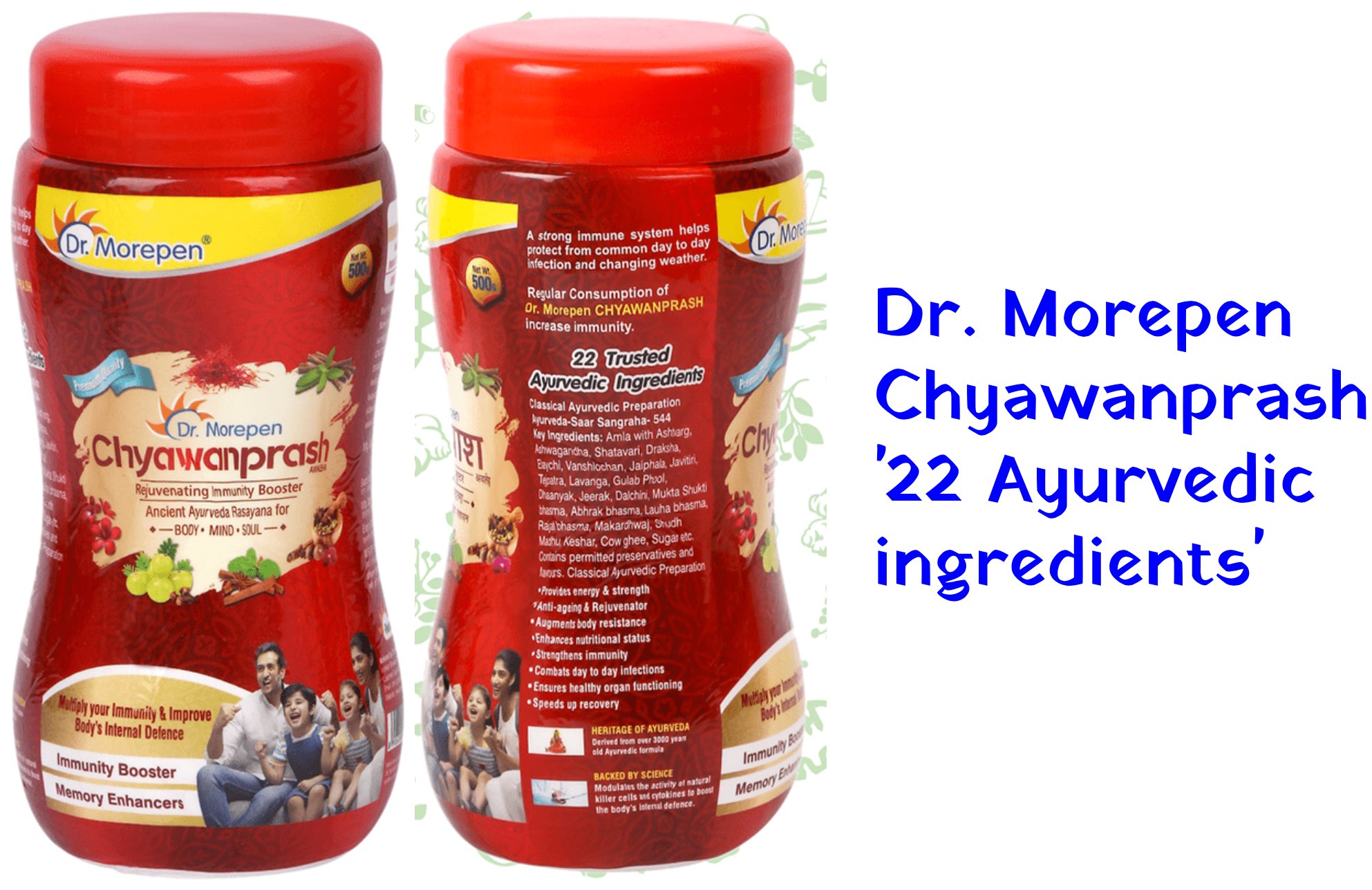

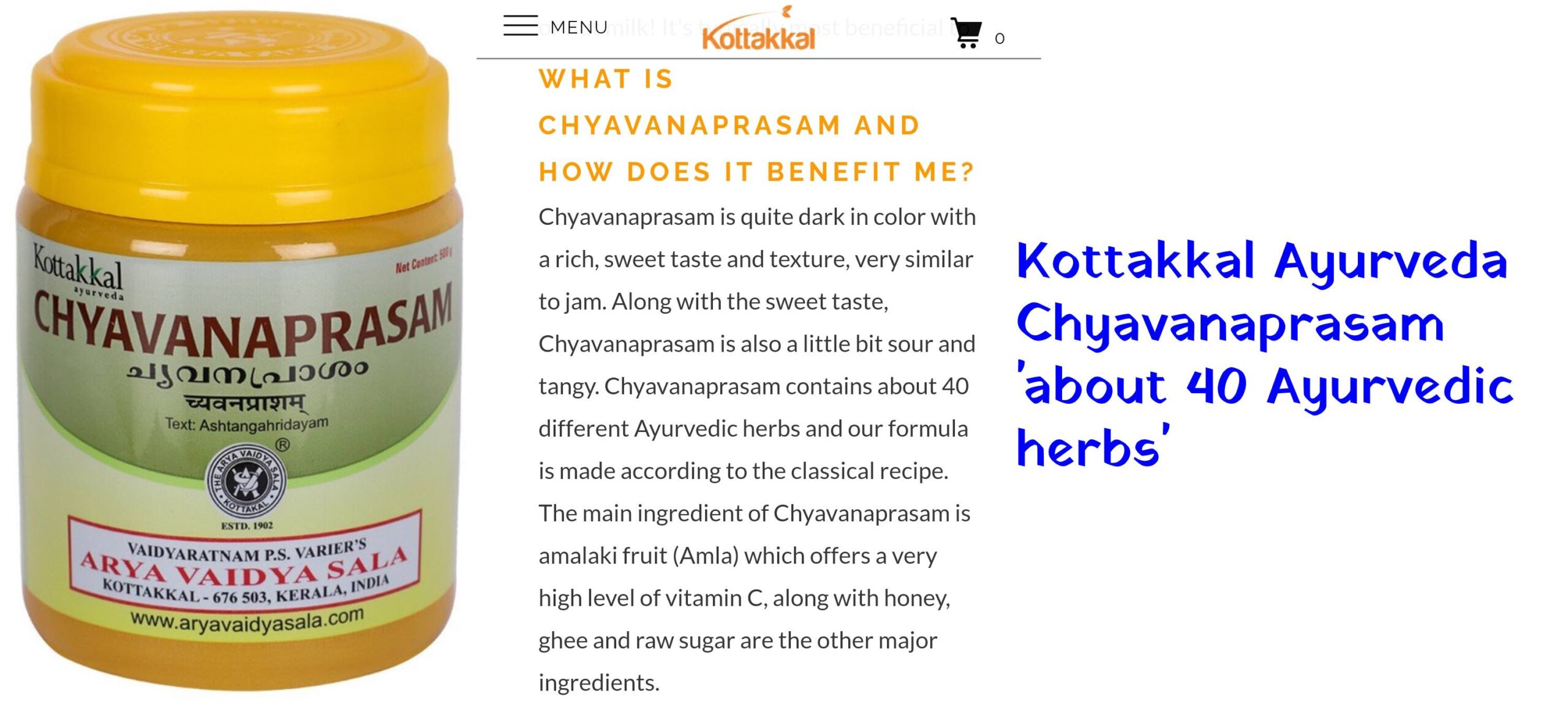
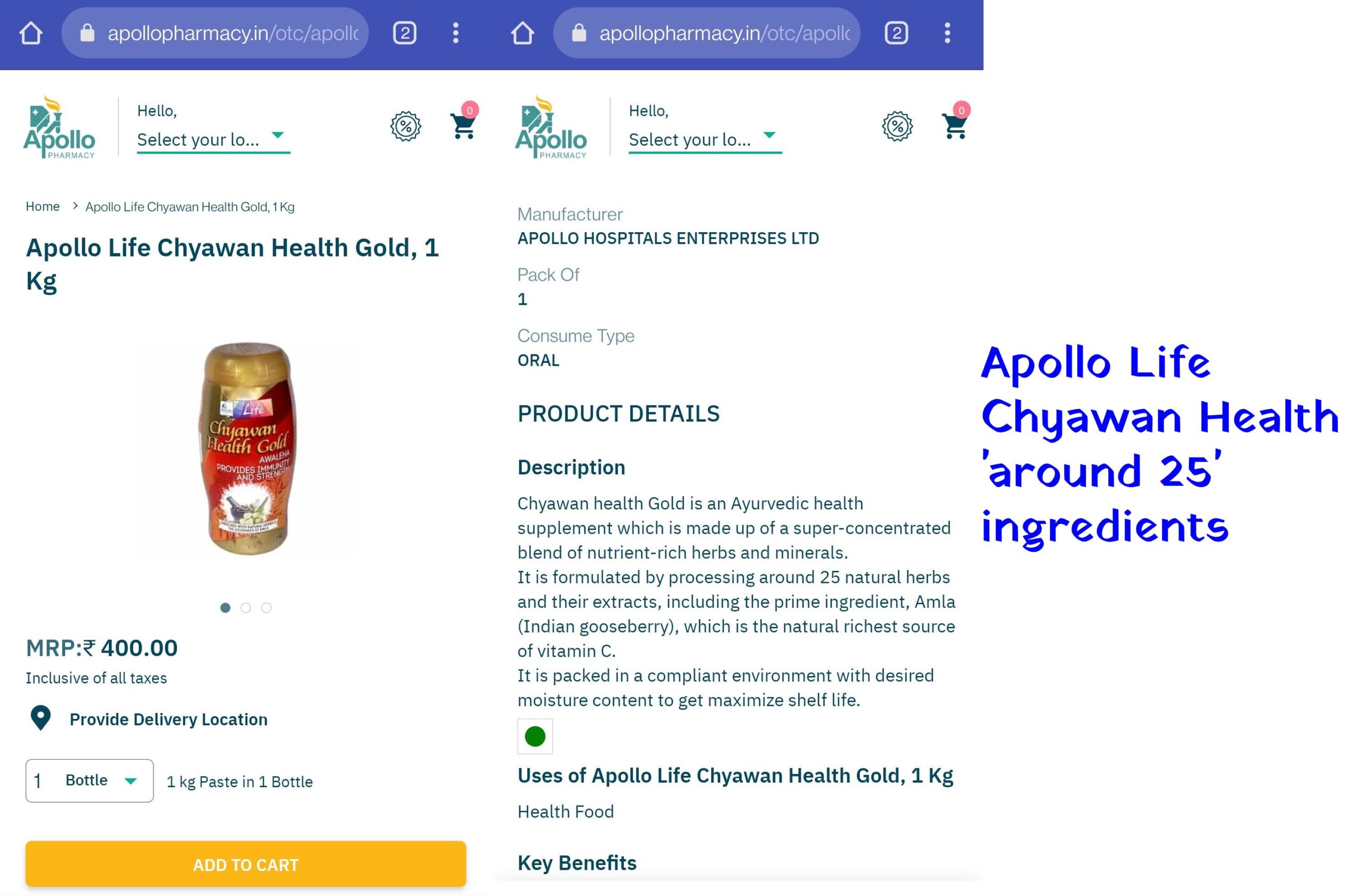

Patanjali does not mention any number with regard to ingredients either in their packs or their communication, from what I observed.
None of the other well-known or reasonably-known brands of chyawanprash claimed a specific ’42 ingredients’ as shown in the Baidyanath ad, including Dabur.
So what was Baidyanath hinting at with the focus on ’42’ and ‘Bayalis’? Considering no other brand mentions ’42’ or ‘bayalis’ in their communication or package or website at all, and given that all the brands largely stay within a range of 25 to 50+ in terms of ingredients, Baidyanath was most probably simply throwing a model imagery through their ad for consumers to actively start questioning the number of ingredients in the chyawanprash they decide to buy next.
This is very similar to Amul’s strategy of making people look for the ingredients in the butter cookies they intend to buy by getting the spotlight on the % of butter in every other pack of butter cookies 🙂

If you notice the product showcase above, only the lesser-known Gurukul Ayurveda Chywanprash has 52 ingredients officially mentioned, besides Saffola Immuniveda Chyawanprash coming close with 50 ingredients.
Baidyanath knew that it had to differentiate itself in some specific way so that buyers would choose it by name and recall beyond the market leader Dabur Chyawanprash that has 60%+ market share and is a clear category winner. And one way (among many) to mark a differentiation is to induce a number-based recall in people’s minds, exactly like Amul that put the ‘25% butter’ as the focus of the butter cookies communication.
Now read Dabur’s claim in the court again: “none of the Chyawanprash formulations listed in the First Schedule to the Drugs and Cosmetics Act contains 42 ingredients and all of them contain 47 or more ingredients and thus it is an untruthful representation”.
Sure, Dabur was right when they said that none of the other chyawanprash formulations listed in the First Schedule to the Drugs and Cosmetics Act contain 42 ingredients. So if Baidyanath is showing one pack with 42 ingredients, it doesn’t point to any of the existing chyawanprash brands in the market and is a mere indicator/figurehead of a fictional chyawanprash brand with 42 ingredients.
And if none of the other brands contain 42 ingredients, why is it an ‘untruthful representation’ instead of ‘fictional representation’ which is so common in advertising anyway?
The simple point is this: Baidyanath’s ad is not disparaging any known, existing brand of chyawanprash as Dabur claims.
So why is Dabur getting its knickers in a twist? For that you need to look at Dabur’s second claim in the court: “there are no ‘ordinary’ Chyawanprash according to the Drugs and Cosmetics Act, as all Chyawanprash (and all ayurvedic medicines) are required to be manufactured based on the ingredients and formulation, specified in one of the authoritative ayurvedic texts, listed in the First Schedule to the Act and all of them are known as Chyawanprash. Hence, there is no special or ordinary Chyawanprash and all are Chyawanprash, based on similar formulation, ingredients and all of them provide health benefits including immunity, energy etc.”
Dabur openly agrees that its own product is the same as any other chyawanprash available in the market in a spectacular self-goal! It also goes on to categorically tell the court that there is no ordinary or special chyawanprash – all the brands look up to the same Ayurvedic texts and do the same thing. This is intended to break Baidyanath’s claim in the ad that their ’52 ingredients’ make it better, along with the fact that they don’t use oil and use only 100% desi ghee.
Note that Baidyanath does not claim that other brands are using oil. It simply says that they do not use oil. That’s hardly disparaging to anyone else and is simply intelligent framing of the sentence that doesn’t deserve a court to rebuke them.
Dabur is upset because they stand to lose the most—by virtue of being the market leader—if people start taking the number of ingredients seriously as a yardstick to consider before buying a pack of chyawanprash.
But Baidyanath has not made any disparaging claims against Dabur or any other existing brand because they use a fictional representation for the other brands in the form of 42 ingredients.
I believe Baidyanath has a legitimate claim that doesn’t deserve to be taken down by the court. I hope Baidyanath is preparing its arguments and counters Dabur’s bullying tactics legally since they have a very valid claim.
That said, at our home, we will continue to buy Dabur Chyawanprash as always, even though I am tempted to try Baidyanath’s Chyawanparash at least once after writing all this!
But then, as a layman/end-user, I have no way to tangibly understand the superiority of the ’52 ingredients’ beyond a feeling of ‘perhaps tastes better!’ if at all it does! 🙂
